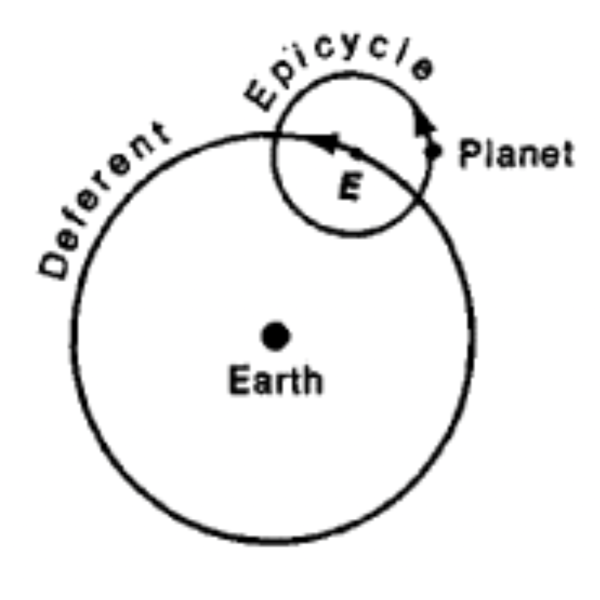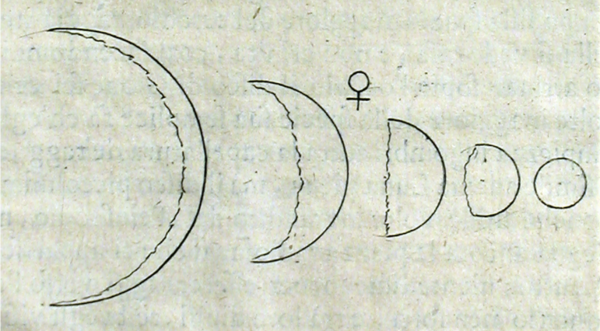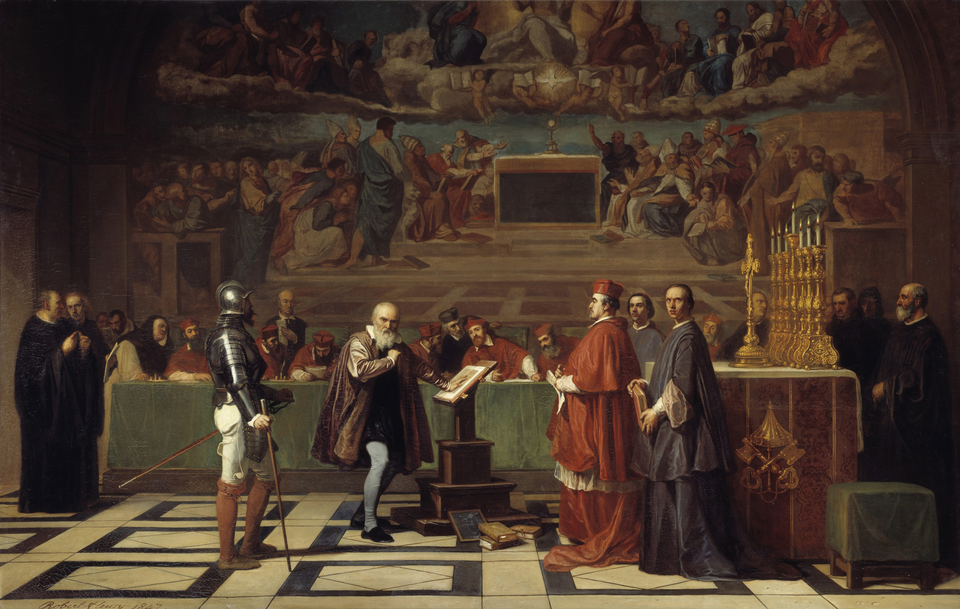In March, the planets Jupiter and Venus were both visible in the evening sky, appearing as bright, un-twinkling orbs, appearing before the stars. With these two celestial bodies—and a telescope to observe them—Galileo Galilei was able to shatter humanity’s existing understanding of the universe.
Conventional wisdom in Europe for centuries had been that the Earth was at the center of the universe. This was not only because it just “felt right,” but because, as far as they could tell, it worked. With circular orbits around the Earth, the motion of the planets and their positions in the night sky could be roughly described. Even better, if they added smaller circular orbits onto those larger ones—so called epicycles—the observations were an even closer match. This was geocentric (“geo”: Earth), known as the Ptolemaic model, and was promoted by the most powerful institution of the place and time: the Roman Catholic Church.
Despite this approach apparently working fine and being relatively simple in that all orbits were circular, Nicolaus Copernicus, over his lifetime, developed an alternate, the heliocentric model (“helio”: sun), which placed the sun at the center of the universe with the Earth orbiting around it. This eliminated the need for epicycles and could be more accurate. Sounds great! The problem? Well, why would God not place humans, his most important creation, at the center? A devout Christian, Copernicus did not seek to answer this question in defiance of the Church, and so the Copernican geocentric model was not proposed as truth but rather a convenient alternative for doing calculations in developing a calendar system. Even with this framing, though, Copernicus would have his theory published until after his death.
Thus, the acceptance of a heliocentric universe was maintained, and 21 years later, in 1564, Galileo was born. He is widely considered the first to point a telescope to the night sky, and this allowed him to see details human eyes had not previously laid on, many of which resulted in an abrupt change of humanity’s view. For example, he was able to observe clearly the moon’s craters as blemishes upon its surface. Similarly, with enough filters, when he pointed his telescope to the sun, he was able to observe dark spots, which he called sun spots (astronomers have the most creative names). These two discoveries challenged the perception that the heavens and everything in it, for they were created by God and not tainted by humans. Additionally, he observed four objects near Jupiter  for many months, eventually concluding that they were orbiting around it: they were moons. Today, these four are known as the Galilean moons.
for many months, eventually concluding that they were orbiting around it: they were moons. Today, these four are known as the Galilean moons.
This again disproved the notion that the Earth was the center of the universe. But one of his most convincing discoveries for geocentrism was the fact that, like the moon, the planet Venus had phases. Obviously, slivers of Venus were not constantly disappearing and being readded, so the only explanation was that they were being hidden by a shadow due to its orbit around the sun—something other than the Earth. This was not merely a more accurate model of the universe, but a direct observation that led to be the only one that made sense.
Still, in the Church’s view, Galileo’s findings went against the word of God, and after forcing him to recant, Galileo was placed under house arrest. He was not vindicated until 1992.


